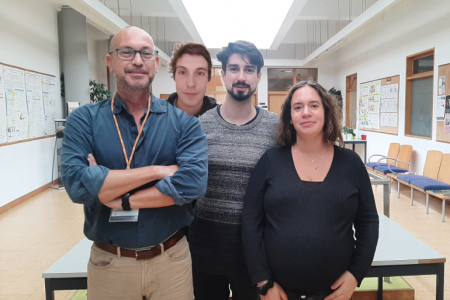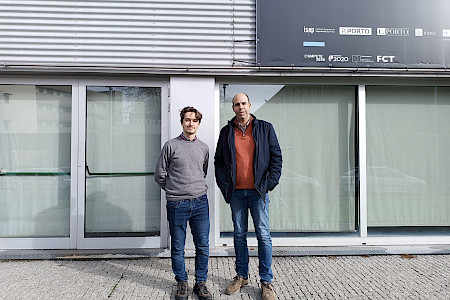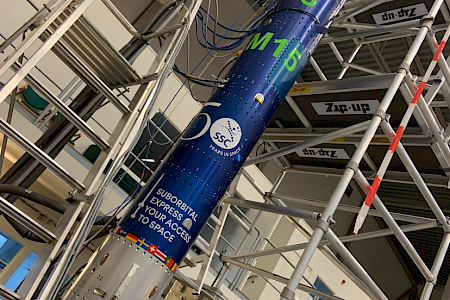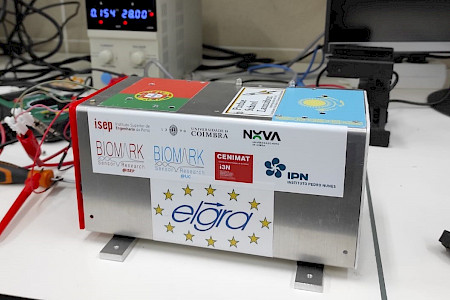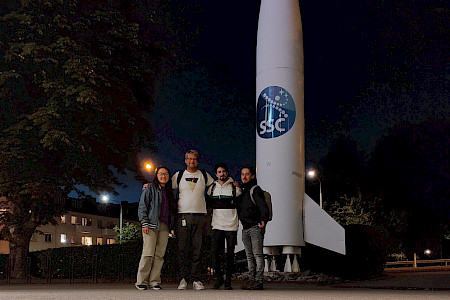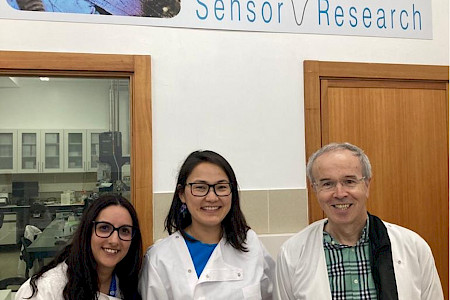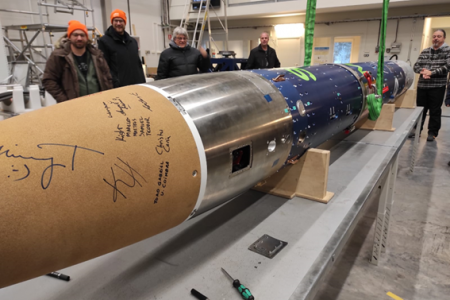University of Coimbra researcher takes biosensors into space to monitor the health of astronauts
The project marks the first flight by a Portuguese team on the MASER rocket.
English version: Diana Taborda
A multidisciplinary project led by a researcher from the Chemical Engineering Department of the Faculty of Sciences and Technology of the University of Coimbra (FCTUC) has taken into space a set of biosensors whose mission is to evaluate the health of astronauts and space tourists.
The Lab-on-paper, funded by the European Low Gravity Research Association (ELGRA), is the outcome of a collaboration involving multiple scientists from the University of Coimbra, the Instituto Superior de Engenharia do Porto and the Universidade Nova de Lisboa, as well as from several research groups/centres: BioMark@ISEP/ BioMark@UC (Centre for Biological Engineering; Akmaral Suleimenova, Goreti Sales, Manuela Frasco and Rita Cardoso), CENIMAT (Institute of Nanostructures, Nanomodelling and Nanofabrication; Afonso Sampaio, Ana Carolina Marques, Elvira Fortunato, Guilherme Ribeiro e Rui Igreja), Centre for Informatics and Systems of the University of Coimbra (João Gabriel Silva), and the Autonomous Systems Laboratory (André Dias), as well as João Pedro Coutinho, student of the Instituto Superior de Engenharia do Porto.
This project results in the first flight of a Portuguese team in the MASER rocket and opens doors to the possibility of analysis of some parameters with interest to health in space. "This novel experiment aims to evaluate the operation of sensors similar to urine strips in space, where gravity is almost zero," explains the project leader, adding that they have used sugar (glucose) or antibiotic (tetracycline) sensors, based on technologies already developed by the team in 2014 and 2015.
The launch took place this Wednesday, the 23rd of November, and was monitored by the project leader, Akmaral Suleimenova, and João Gabriel Silva, Full Professor of Informatics Engineering at FCTUC, in order to ensure on earth the proper operation of the biosensors, the mechanical structure developed for this purpose and the communication between the rocket and the experiment, enclosed in a special box for this unique journey.
The experiment was successful in terms of communication with the rocket and anticipated image recording, but not all the expected results were achieved. A detailed analysis of all the data collected will now follow. In a second launch, it is hoped not only to collect the data that has not been obtained so far, but also to broaden the scientific scope of the experiment.
« As there are no hospitals in space, we need simple ways to analyse the health of astronauts or space tourists. Taking a blood sample is very difficult because the absence of gravity makes the transfer of liquids difficult. In this situation, rapid tests for saliva or urine, which change colour, are the most appropriate, as all it takes is a little urine/saliva to get a result that is visible to the naked eye. Until now, the possibility of using these sensors in space has never been tested," reveals the consortium, considering that the team is on its way to achieving this feat, and that at this stage the consortium has privileged knowledge to conclude this path successfully in the future.
The biosensors travelled in the MASER rocket, built by the Swedish Space Agency and tested in previous launches. The MASER-15 mission is the third flight of the Suborbital Express series, which includes several experiments of very different natures in the same flight, one of them the Lab-on-paper.
The rocket can carry 300 kg up to an altitude of around 260 km (the Earth's atmosphere only extends up to 100 km in altitude). This altitude is fundamental so that the quality of the microgravity to which the experiments are subject to is high, which is an improvement of this rocket compared to the previous model.
The rocket was launched from the Esrange space centre in northern Sweden, above the Arctic Circle, which specialises in suborbital flights. This is Europe's largest civilian rocket launch site, where the outside temperature at this time of year ranges from minus 10 to minus 20 degrees Celsius.

